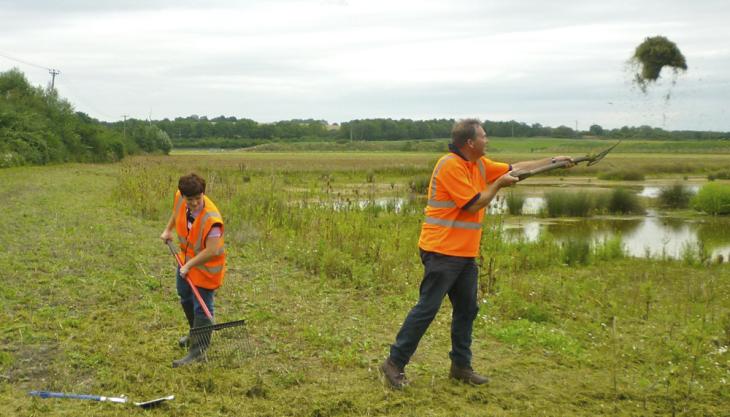Making hay while the sun shines

Hanson UK and Nature After Minerals creating rare wildflower meadow habitat at an Oxfordshire quarry
HANSON UK and Nature After Minerals (NAM) – a partnership between the RSPB and Natural England – have been working to enhance the biodiversity of a former gravel pit in Oxfordshire, using the harvested hay from one wildflower-rich site to help create rare, threatened wildflower meadow habitat on another.
As part of a 25-year Section 106 agreement with Oxfordshire County Council for extended aftercare, Hanson UK have recently been working to restore 25ha of former sand and gravel pits at Cassington Quarry, near Oxford, creating valuable reed bed and pond habitat.
Overall, the restored pit complex of more than 133ha includes a number of lakes, wet grassland margins and native broadleaved woodland plantations.
However, as the site also lies within 500m of two SSSIs – Cassington Meadows and Pixey and Yarnton Meads – Hanson have capitalized on an opportunity to extend and reconnect this vital habitat within the wider Oxfordshire landscape by taking a green hay cut with its rich source of wildflower seeds from the existing meadows and spreading it on to the newly-restored area.
Andy Duncan (pictured right), Hanson’s principal landscape manager, said: ‘Conserving local genetic integrity is an important part of biodiversity conservation. Spreading green hay from a locally collected seed bank source helps maintain and protect local indigenous species and safeguards the future of the adjacent historic meadows.
‘Even though we were under no obligation to undertake this wildflower seeding, we felt it was a great opportunity to enhance our lake margin restoration and the green hay strewing methodology was more appropriate than commercially bought-in wildflower seed, given the sensitive location close to existing internationally important habitat.’
NAM programme manager Carolyn Jewell (pictured left), who helped supervise the work, said: ‘Hanson’s work at this site in Oxfordshire is a prime example of what can be achieved for wildlife and the natural world on worked-out quarries.
‘Sites like this can go on to provide an essential refuge for endangered plants, mammals, reptiles, invertebrates and birds, and it is hoped that eventually they will provide local communities with the opportunity to reconnect with nature and take refuge from the hurly-burly of daily life.’


